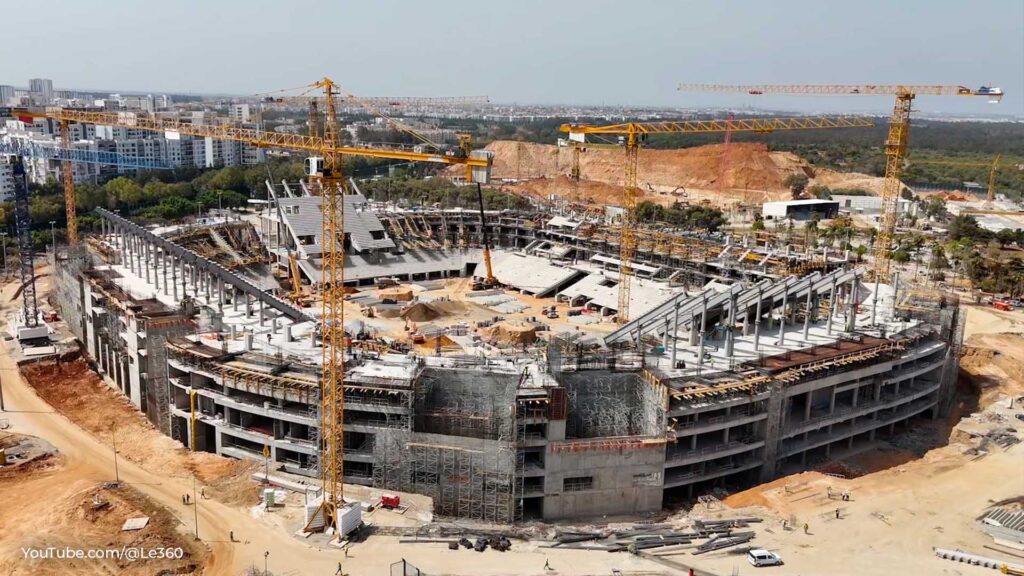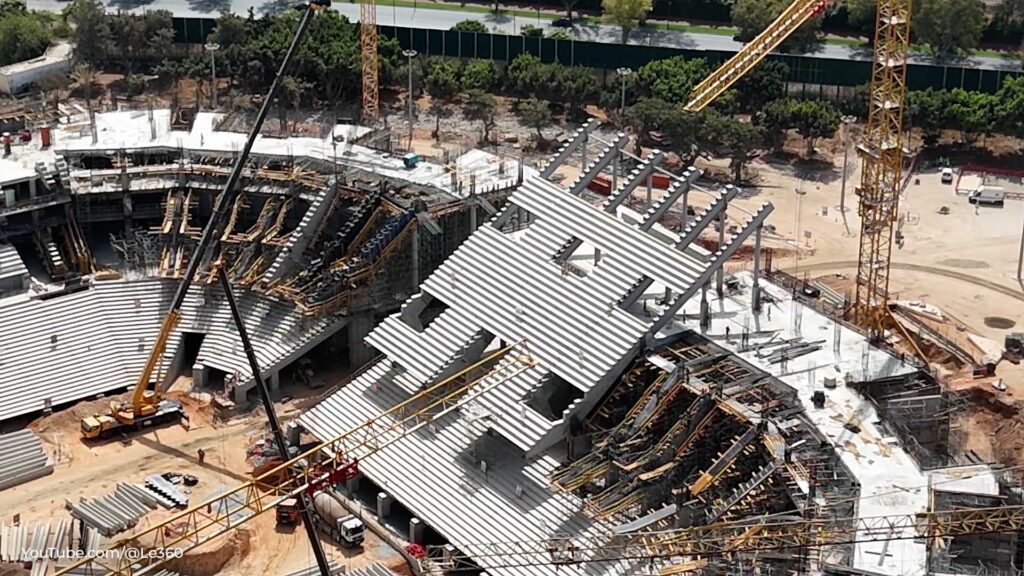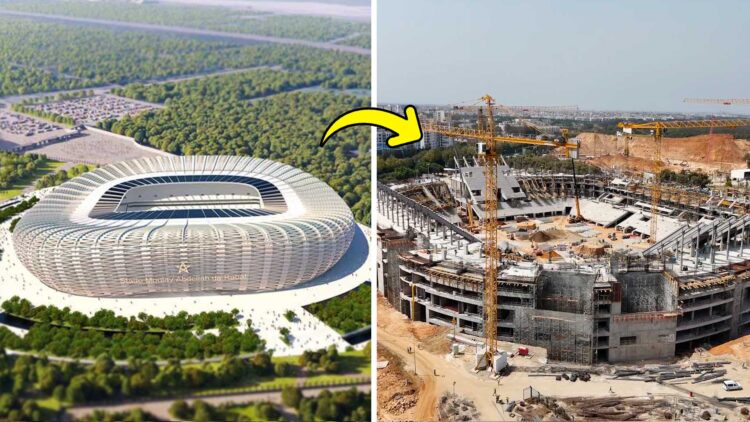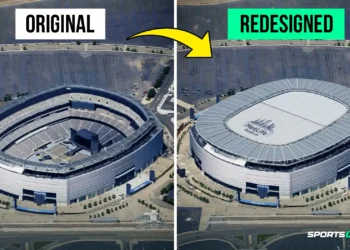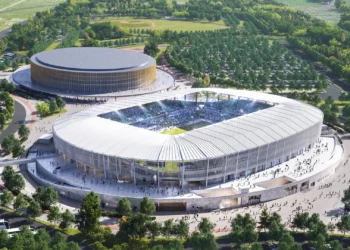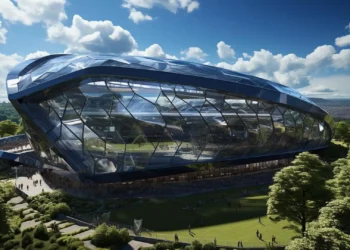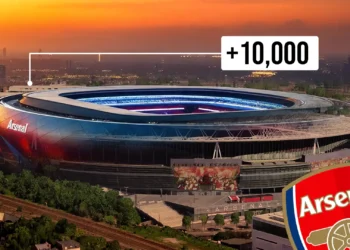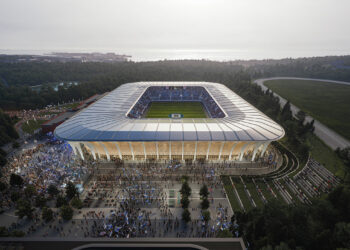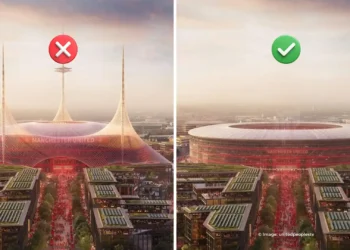The construction of the new Moulay Abdellah stadium in Rabat is progressing rapidly, with the venue set to feature 65,000 fully covered seats. Recent aerial images captured by Le360 highlight the significant strides made in the development, underscoring the ambitious scale of the project.
Strategically located next to the highway leading to Casablanca, the new Moulay Abdellah stadium has been under construction for several months. This modern facility is being built with an eye toward two major upcoming football tournaments: the 2025 African Cup of Nations (CAN) and the 2030 World Cup, where Morocco will serve as a co-host alongside Spain and Portugal.
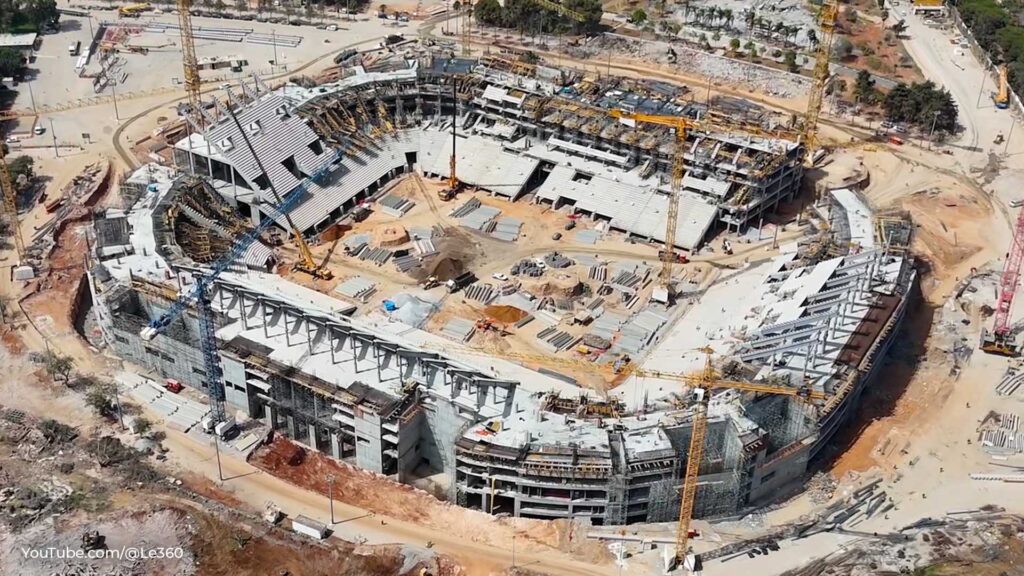
The site of the stadium holds a rich history. Originally built in 1980 by a Chinese construction company, the former sports complex served the region for decades. However, in 2023, the entire structure was demolished to make way for a cutting-edge stadium that reflects Morocco’s growing prominence in the world of sports. The new stadium is scheduled for completion by December 2024 and is expected to set new standards in design, technology, and sustainability.
Beyond its role as a sports venue, the stadium will also act as a key piece of infrastructure, driving economic development and serving as a symbol of Morocco’s commitment to hosting world-class events. The surrounding area is anticipated to undergo significant development, with new roads, transportation links, and amenities enhancing the stadium’s accessibility and impact on the region.
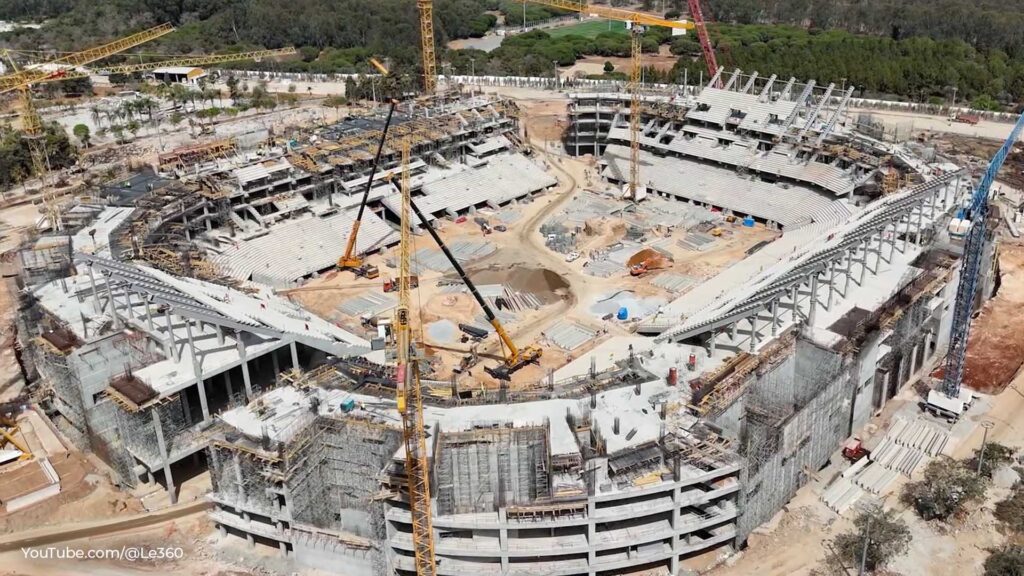
The new stadium complex will feature fully covered seating, spread across three levels, ensuring optimal comfort and viewing experience for spectators. It will be outfitted with state-of-the-art technology, including an advanced lighting system designed to enhance both the atmosphere and visibility during events.
In addition to the stadium itself, the complex will include a range of supporting infrastructures. These will comprise underground parking facilities to accommodate large crowds, multiple road access points to ensure smooth traffic flow, and improved public transportation links. The design also anticipates future technological needs, with provisions for cutting-edge communication systems and eco-friendly features, making the stadium not just a sports venue but a modern hub for entertainment and events.
